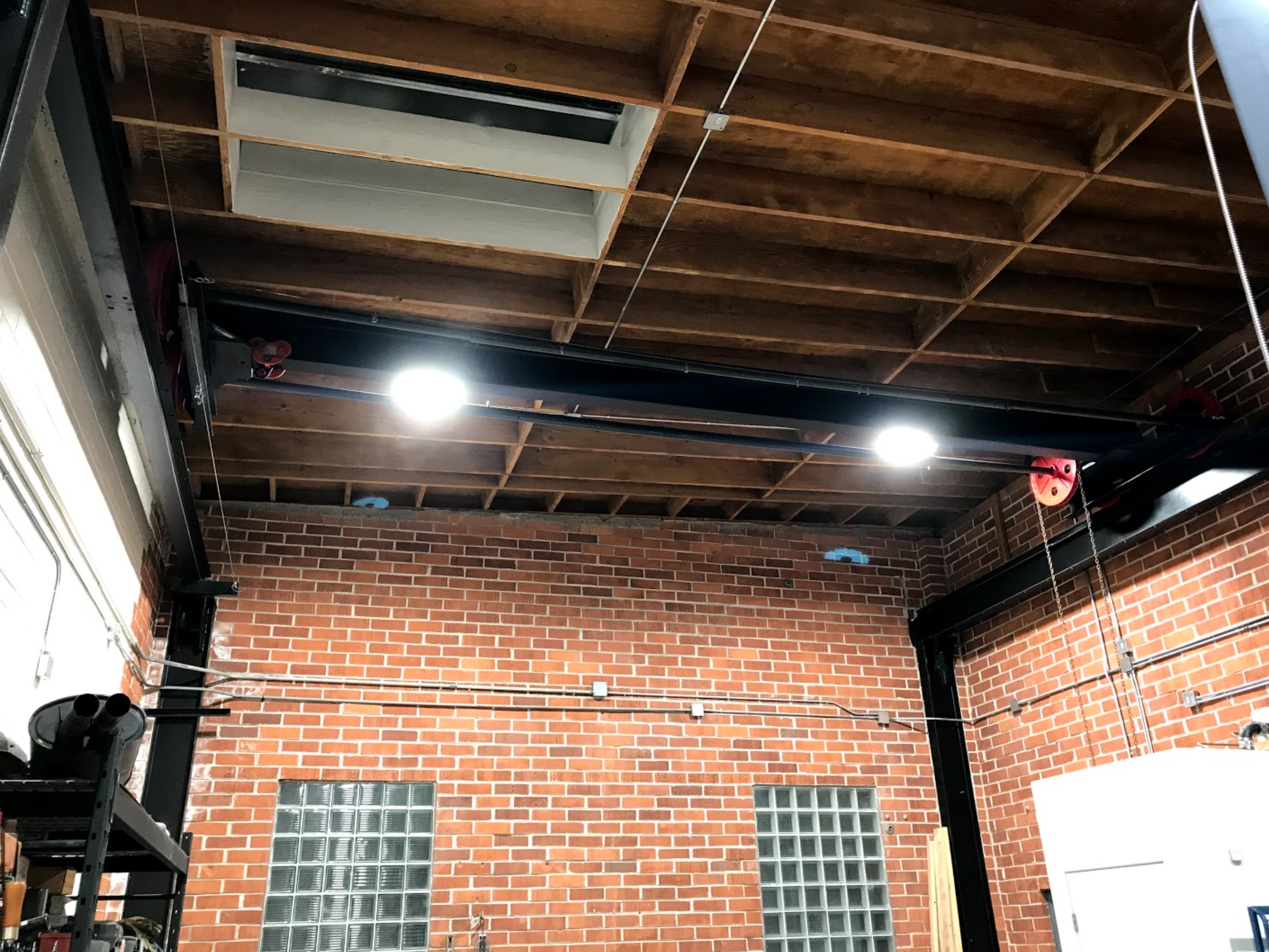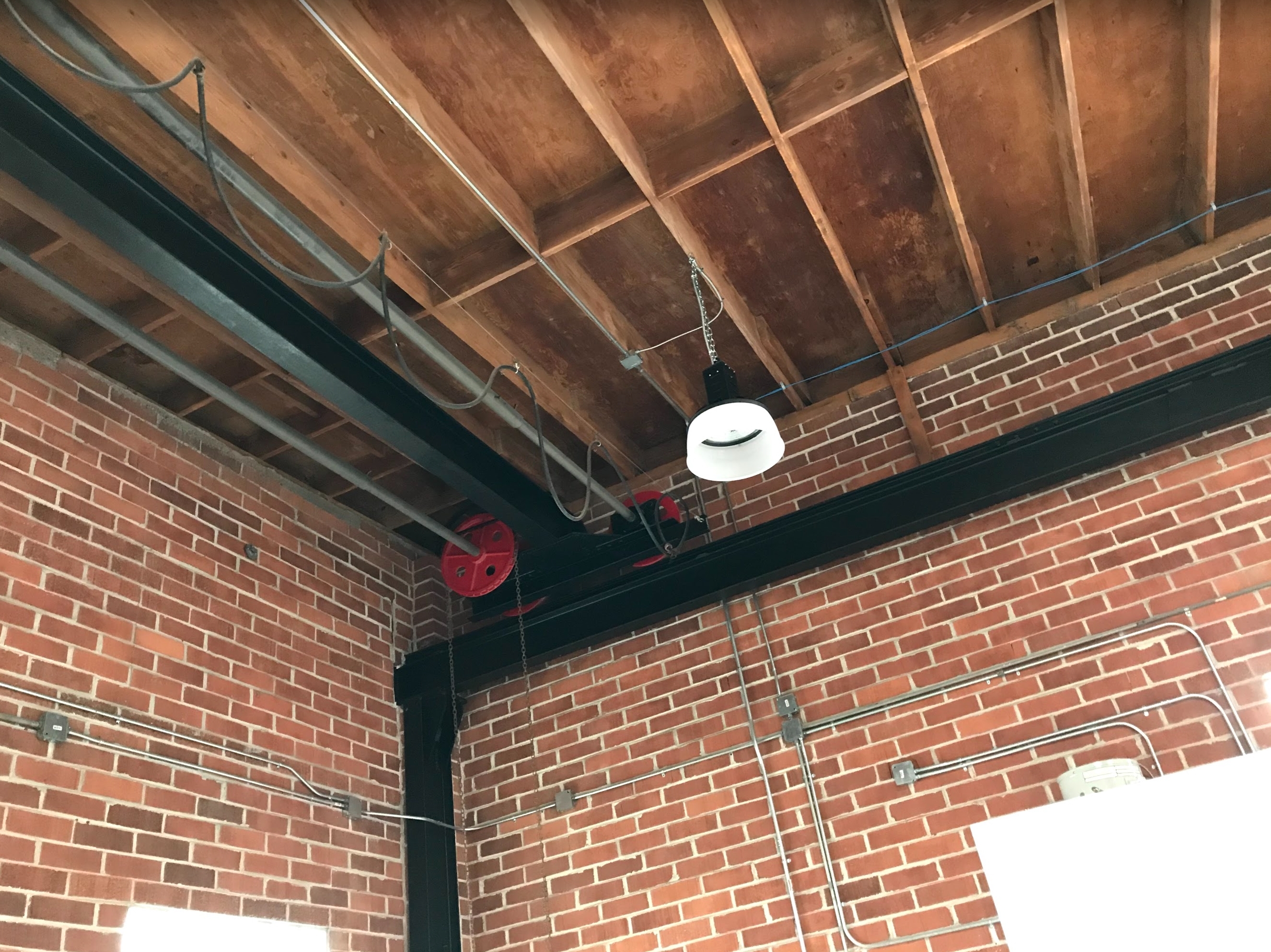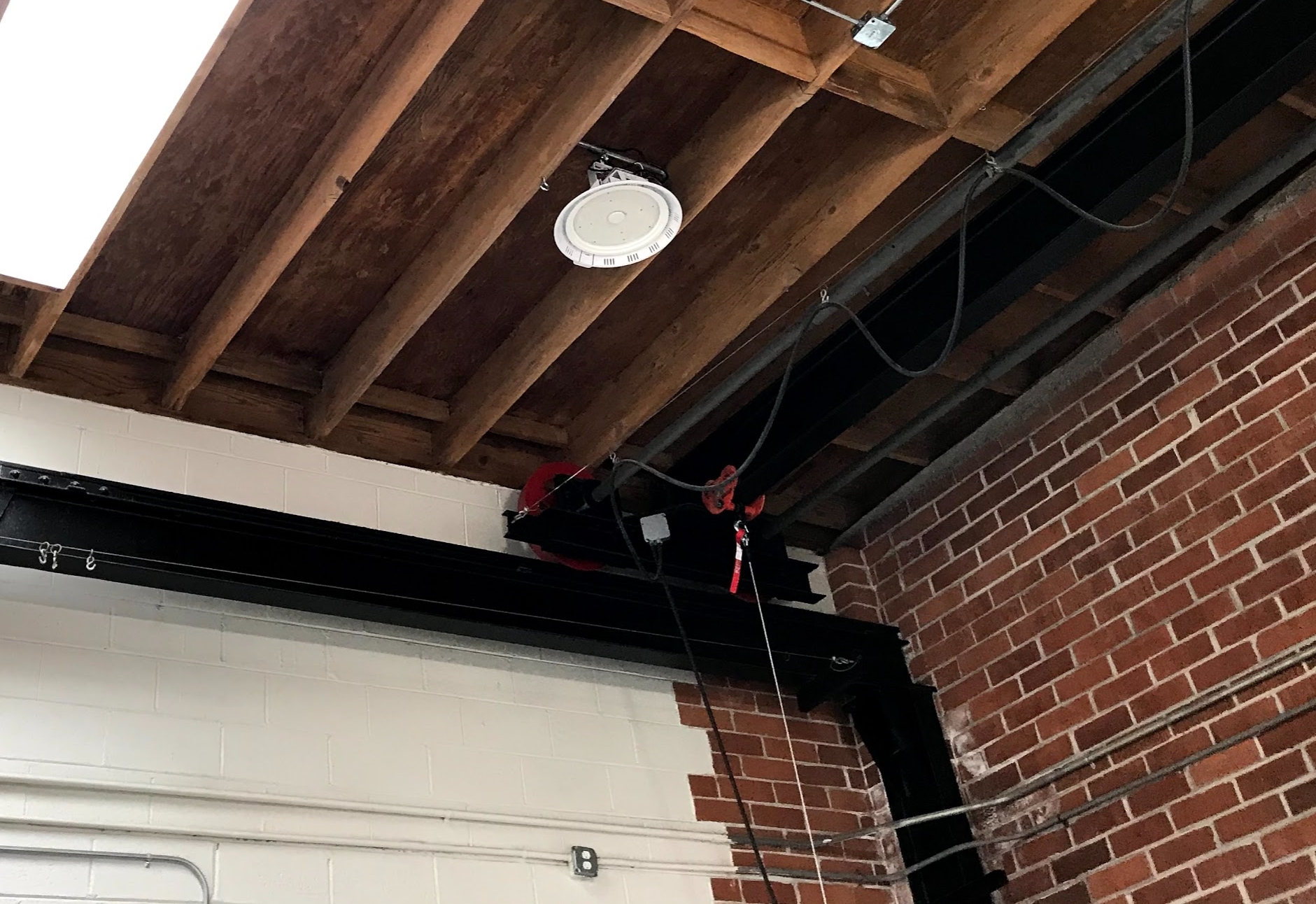Whatever kind of home, shop or business that intends to use the crane will likely have to be insured. Insurance costs are the driving factor in keeping things safe and on the up & up at home or around the shop. An insurance audit whether it be for home, business or otherwise is going to raise a red flag when seeing this crane. Questions will be asked i.e.; Are you using the crane? What is the designed crane capacity? When was the crane last inspected? In my experience insurance auditors are far more scrutinizing than any OSHA inspector.
The OSHA Regs for Overhead Cranes 1910.179, would not even include this type of crane by definition. However, the crane and hoist must comply with consensus standards such as ASME, HMI and etc. to meet most insurance requirements and this would include having the crane inspected to those applicable standards.
The owner will want to know this and should learn what's involved before putting himself, his friends or anybody else at risk. If this will be used in business, OSHA would cite the General Duty Clause if an employee were exposed to a known hazard, injured or killed. Hefty fines could follow if records and documentation are not in order.
I'm in the overhead business and have seen customers go both ways in this same scenario. Some park the crane, weld stops behind the wheels and admire them as a museum piece. Even had one guy take a double girder bridge crane down and use it as a pedestrian bridge on his property. Others take advantage of these conservatively built structures, invest a little money in engineering, updates add a new hoist and they have something 10X better than they could buy in todays market.
If the owner decides to scrap the crane and buy a new overhead, keep in mind that the supporting runway structure must still be analyzed by an engineer for the wheel loadings of the new crane. I would advise to consult with a local crane builder. Many of these companies can now provide very affordable "kit" cranes and some may have an engineer on staff to analyze the supporting structure and provide the allowable wheel load. If the owner's intention is to ever sell the property and include marketing the crane as a functional asset, this is the way to go.






